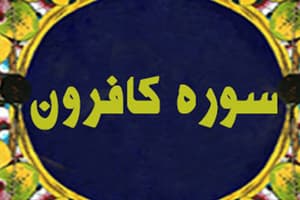Podcast
Questions and Answers
What are the Five Ks in Sikhism?
What are the Five Ks in Sikhism?
- Kesh (correct)
- Kirpan (correct)
- Kara (correct)
- Kanga (correct)
- Kachera (correct)
What does Kesh represent in Sikhism?
What does Kesh represent in Sikhism?
Unshorn hair
What is the purpose of the Kanga?
What is the purpose of the Kanga?
A small wooden comb that keeps hair clean and tidy
What does the Kara symbolize?
What does the Kara symbolize?
The Kachera originally symbolized a Sikh soldier's readiness for battle.
The Kachera originally symbolized a Sikh soldier's readiness for battle.
What is the function of the Kirpan?
What is the function of the Kirpan?
A Sikh who wears all five Ks is known as ______.
A Sikh who wears all five Ks is known as ______.
A Sikh who has not donned all five Ks is referred to as ______.
A Sikh who has not donned all five Ks is referred to as ______.
Flashcards are hidden until you start studying
Study Notes
Overview of the Five K's
- The Five K's are fundamental Articles of Faith in Sikhism, commanded by Guru Gobind Singh, the tenth Sikh Guru.
- They represent an external identity and a commitment to the Sikh way of life.
- Sikhs who wear all five K's are known as Khalsa, meaning "pure," while those who do not are referred to as sahajdhari, meaning "slow adopter."
Kesh
- Kesh refers to unshorn hair and is a central kakār for Sikhs.
- Sikhs maintain uncut hair as a display of the perfection of God's creation and commitment to spirituality.
- Guru Gobind Singh advocated for letting hair grow as intended by God.
- The Dastaar, or turban, serves to protect Kesh and signify spiritual awareness.
Kanga
- The Kanga is a small wooden comb, used by Sikhs at least twice daily and worn in the hair.
- It symbolizes cleanliness and order in life, reflecting a tidy and organized lifestyle.
- Combing hair regularly signifies acceptance of God’s gift and the importance of maintaining cleanliness.
Kara
- The Kara is a steel bangle worn on the right wrist, representing strength.
- Its circular shape symbolizes unity and eternity, aligning with Sikh beliefs about the infinite nature of God.
- The Kara fosters a connection between Sikhs and reinforces the idea of community and eternal allegiance to faith.
Kachera
- Kachera are short trousers, originally symbolizing a Sikh's readiness for battle and mobility.
- It helps distinguish Sikhs from Hindus, who traditionally wear dhoti, though this has implications for Sikh identity.
- Most Sikhs view the Kachera primarily as a symbol of modesty and self-respect.
Kirpan
- The Kirpan is a short dagger illustrating a Sikh's commitment to defend the vulnerable and uphold justice.
- Baptized Sikhs are required to carry a kirpan as a symbol of bravery and protection of the innocent.
- It represents not just physical defense but also the courage to confront inner challenges and weaknesses.
- Historically, the kirpan serves as a reminder of the sacrifices made by early Sikhs in defense of their faith and community.
Studying That Suits You
Use AI to generate personalized quizzes and flashcards to suit your learning preferences.




